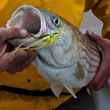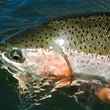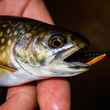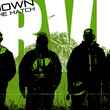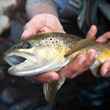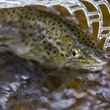Maori Magic
After fishing with van da Loo, I caught an Air New Zealand island hopper to Wellington, the capital, and went on to Taupo. There, I fished the Tauranga-Taupo River with guide Brent Pirie, a spry 50-year-old who has been guiding in the North Island for 14 years. The freestone river, not as well known as the nearby Tongariro, gave up some really fat, healthy rainbows on the fly, my largest going over 6 pounds. I spied that one rising 2 inches off a rock wall in what is known as the Cliff Pool, and was able to plop my fly, a spidery looking thing called a Turks Tarantula, right into his feeding lane. His dogged fight, with hard runs up and down the pool, almost breaking me off on an underwater log, was just spectacular.
Brent and I had fished on Maori forest land, hiking to the river through a dense forest of fir trees and lupin and Toi Toi bushes, the latter characterized with white, streaming, brush-like heads. We hit many deep, fishy looking pools as we went. The Maoris, who came to New Zealand from Polynesia in 1280, before the Europeans even knew it existed, make up 14 percent of the country’s population today. Their rich culture is found everywhere, from the loud, exotic native dances (called “Kapa haka”), to haunting music performed with trumpets (“putatara”) and wooden flutes (“koauau”) that are played through the nostril, to native delicacies such as fish wrapped and steamed in peppery taro leaves in a “Hangi,” or pit fire.



